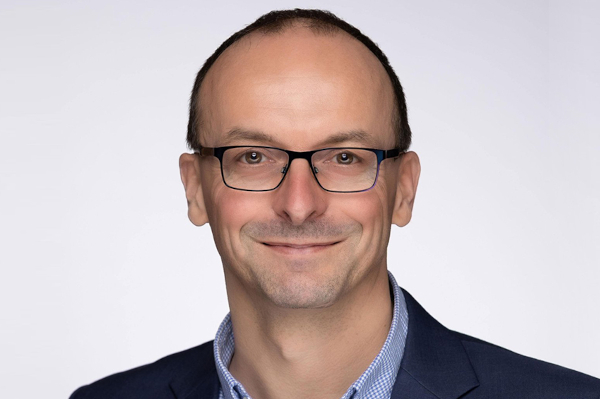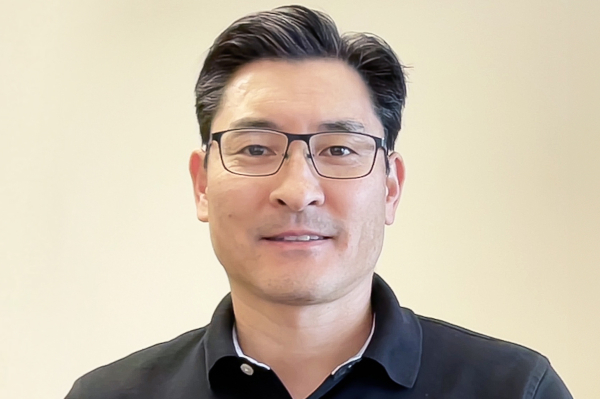With a strong focus on industry-relevant knowledge, McGill University’s School of Biomedical Sciences (SBMS) drives scientific breakthroughs and real-life applications. “A lot of people in the School are asking really interesting fundamental questions, identifying drug targets and/or potential modifications, and then wanting to move those into the clinic—and that’s brilliant,” says Koren Mann, PhD, chair of the Department of Pharmacology and Therapeutics at the SBMS.
Keith Murai, PhD, the School’s director and a professor in the Department of Neurology and Neurosurgery, describes the SBMS as a “unique ecosystem” in Canada, which offers the full spectrum of education, training and research. Although their primary mission is to accelerate biomedical research discoveries, researchers at the SBMS also translate these discoveries into clinical applications. “It’s great to understand something in the lab, but the most beneficial thing we can do is apply that to society. Until it moves out of the lab, a discovery has little impact,” says Mann, who studies how non-essential metals impact the immune system and cause disease. Some SBMS investigators collaborate with researchers in other McGill schools to increase their impact in the real world. During the pandemic, for instance, one of Mann’s colleagues worked with researchers across the university to create COVID-19 tests.

The SBMS is “an incredibly collaborative place,” one in which researchers can move in spheres where they might otherwise feel uncomfortable, adds Mann, whose research has led scientists to the realization that arsenic exposure is a cardiovascular immune problem. “We all have our own point of view—but having a bunch of people thinking about problems from different perspectives is only going to make the science better,” she says. “I never hesitate to call one of the other chairs and say: one of my faculty members is thinking about this new idea. Who in your department is thinking about that?”
Mann also calls attention to the valuable conversations that result from events held at the School, which, at times, attract big-name scientists. “Just sitting in a room talking about science is enough sometimes to generate a bunch of new ideas and create collaborations. It could be someone you didn’t even know before, but you were sitting in that seminar, and you asked similar questions or were asking along the same line, and you go up to them afterwards and say: hey, I had a thought.”
Collaborating with others with diverse scientific backgrounds is particularly valuable for researchers working on therapeutics for complex diseases like cancer, says Murai. As he points out, these researchers can draw on the expertise of scientists from disciplines like biochemistry, immunology, pharmacology and physiology. He refers to one interdisciplinary project led by Philippe Gros, OC, CQ, PhD'83, a professor in the Department of Biochemistry: the DNA to RNA initiative (D2R), which was established to discover and develop genome-guided, RNA-based precision medicines for oncology, infectious diseases and rare diseases. McGill, which has made seminal discoveries in RNA biology, was recently awarded $165 million in federal funding to support this ambitious initiative.
From 3D-printed COVID-19 tests to artificial pancreases
“When you bring the expertise of different people to the table, you can start to tackle problems that none of us could address individually,” observes David Juncker, PhD, chair of the Department of Biomedical Engineering. Students and researchers within the research areas of his department work on a variety of innovative projects that can solve health issues and might be of interest to industries. For example, one of the ongoing projects in Juncker’s lab is the use of 3D printing to print microscopic diagnostic devices, including a COVID-19 rapid test and a new type of aerosol device for capturing microdroplets expelled through exhalations that can be used for diagnosis. Together with a new test that is quick and “over a thousand and a million times more sensitive” than existing ones, he hopes to make diagnostic testing for COVID-19 as simple as a breathalyzer test.

The Department of Biomedical Engineering has great strengths in the area of wearable devices, adds Juncker, who sees this as the next revolution in health care. His colleagues are already running clinical trials on artificial pancreases for diabetes, wirelessly monitoring preterm infants in the neonatal intensive care unit and developing wearables to monitor the bladder of incontinent people. “This is only just the beginning,” he says, adding that future patients will be able to carry a “lab on their body” in the form of minimally invasive wearable devices that can record health parameters, monitor various biomarkers, and communicate with their cell phone to inform patients and healthcare providers. “Given all the strengths we have at McGill and our connection to the hospitals, we have an opportunity to take a leadership role in wearables and to drive that area forward,” he says. “It will have a huge clinical impact for patients and also, of course, economic potential.”
Although biomedical engineering research projects have a more obvious connection to industry, Murai points out that all the departments and institutes associated with the School are working on innovative projects that can potentially be translated into industrial or clinical applications. (The School also encompasses the departments of Anatomy and Cell Biology, Biochemistry, Human Genetics, Microbiology and Immunology, and Physiology, as well as the Goodman Cancer Institute and the Dahdaleh Institute of Genomic Medicine.)
“Considering that the majority of biomedical sciences students go into industry, we would like to move towards a model where industry-relevant knowledge and real-life industry training experiences are more widely incorporated into graduate program training,” says Murai. Currently, the School only offers this type of training through its Master of Science in Translational Biomedical Engineering program.

Another goal of Murai is to prioritize recruiting scientists on the cutting edge of their disciplines, ones who will bring in new ideas and research grants and enhance the School’s reputation, attracting students. Although the various department are able to share resources, the costs of running the School remain high in order to support groundbreaking research, he adds. On top of the expense of hiring top-tier faculty, the School’s sophisticated instrumentation needs to be maintained and upgraded, and importantly, operated by scientists with highly specialized training. “We realize that federal and provincial funding will not be sufficient for McGill to provide the tools and expertise needed by our researchers,” says Murai, who uses McGill’s Facility for Electron Microscopy Research (FEMR) for a technique called “electron microscopy” to gain knowledge about cellular connectivity patterns within the brain, including how the brain is changed in Alzheimer’s disease. “Moving forward, donors and philanthropists with an interest in building a healthier society will be key to ensuring that our research remains at the frontier of the biomedical sciences.”
